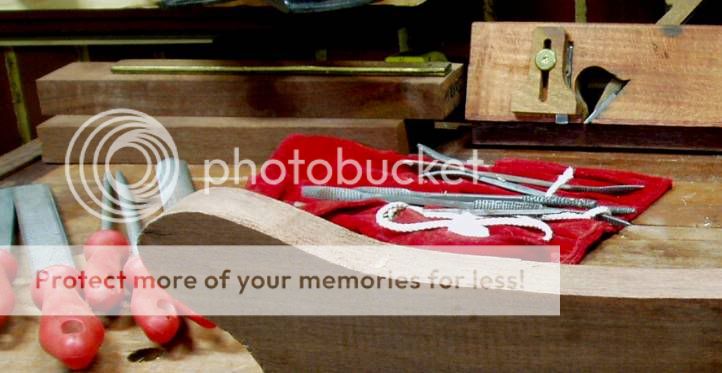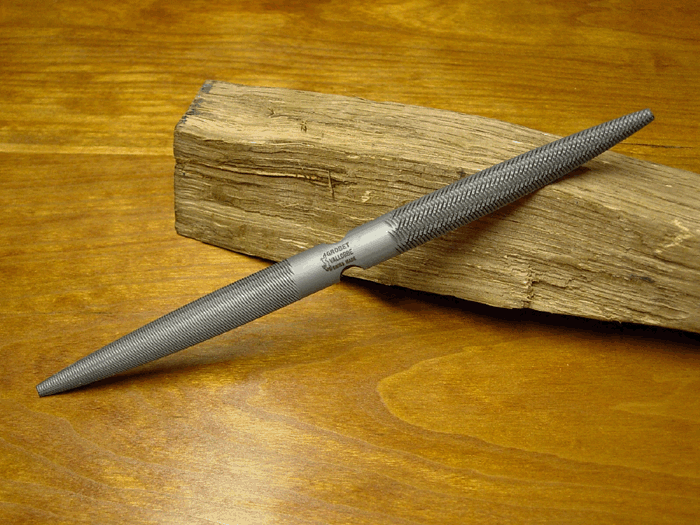Pete W":3sab8tgn said:
Any tips on rasping technique gratefully received

...
Is there a particular technique? Do they only work well on close-grained hardwoods? Words from the wise would be welcome!
Hi Pete,
Aurious are very nice rasps--I have many and use them daily.
But we also have and use several of the Nicholson #49 and #50 rasps, which are more reasonably priced.
The brand is probably less important than just obtaining the best ones that fit the budget. What makes the Aurious better is that they are hand punched, which makes for a more random pattern of the teeth. The Nicholson approximate the randomness via machine.
When rasping, a light pressure is all that is required. Some woods spelch--a form of tearout--easier than others. One form of spelching is where wood is literally tore out deeper than the teeth are penetrating. Also, a dull rasp can crush fiber deeper than the teeth penetrate, only to be revealed as one goes deeper. This effect can also occur with dull files: fiber is smashed appearing to be smooth, but in fact the rougher surface is hidden below bent wood fiber only to be revealed when one sands.
We use rasps on nearly every type of wood, but not all wood will allow a coarse rasp to be used without spelching. On woods that spelch easy, use sharp files if you do not have fine rasps.
Again, good rasps come in a full-range of aggressiveness. We use coarse rasps to ones fine enough to lightly sand afterwards on our saw handles. Good rasps and files can often be found used and then restored to near new to better than new performance. In this country, we send our rasps and files to a place called Boggs Tool. But all they do is soak the files and rasps in acid. For what ever reason, the acid attacks the body of a rasp/file faster than the cutting surfaces.
I have tried doing my own with mixed results. Boggs has near perfect results every time. So we send them in. Perhaps someone in the UK knows of a business which does the same? I've paid as little as one-tenth of a US dollar for used rasps, which I in turn have sent to Boggs and for $8 US and postage costs had them come back better than when they were made. Not a bad investment for something that would have cost $100 US new.
I've also had good success buying rasps and rifflers from ePay and sending them in. So that may be a good source of used rasps and files--if you have someone there that can restore them to use.
Files and rasps should be stored so they never touch other metal. In use, they should also not be allowed to either touch each other or other metal bits on one's bench.
OK, I've said enough...time for turning the heat on in the shop.
Take care, Mike
I owe, I owe, so off to work I go...






































